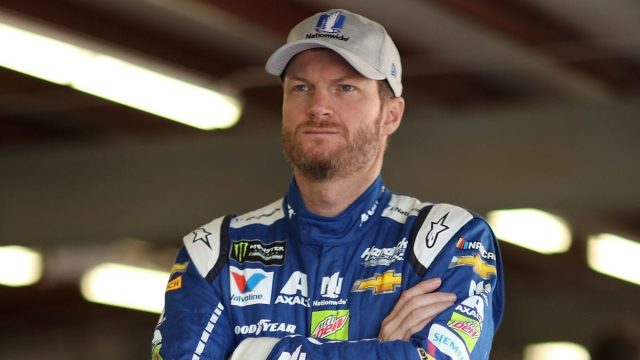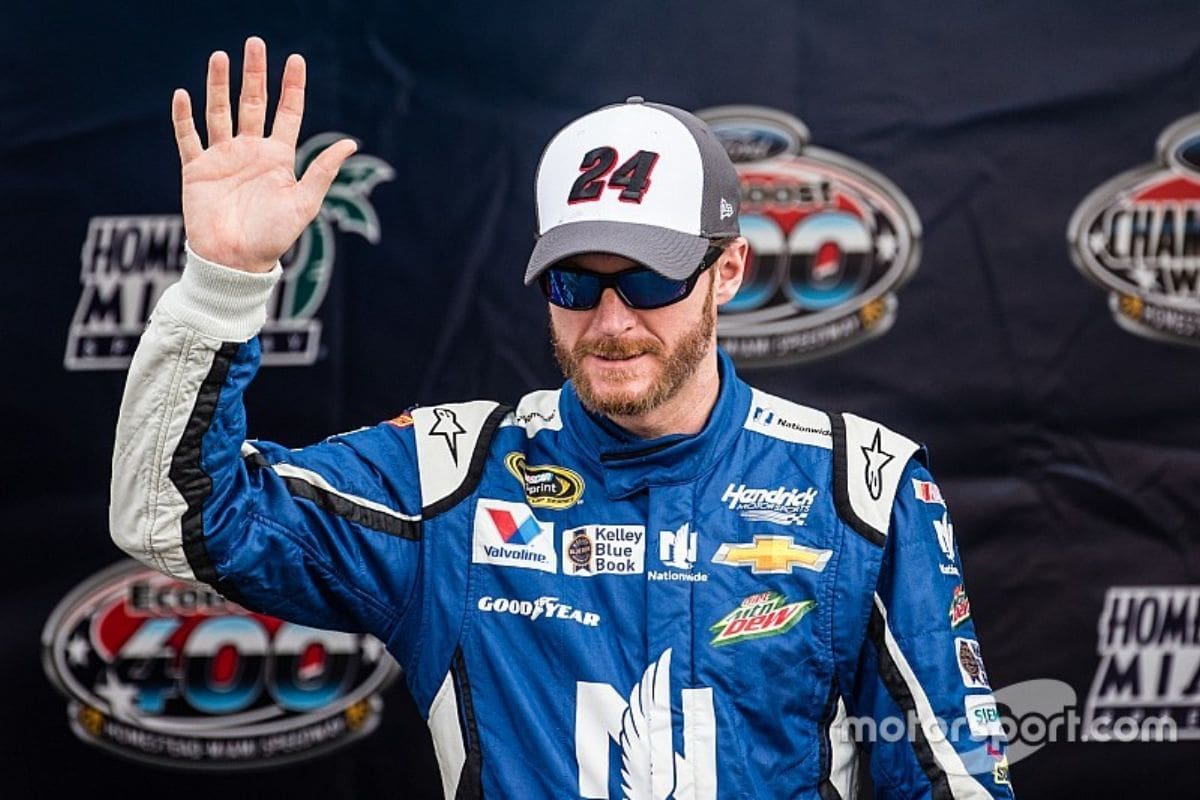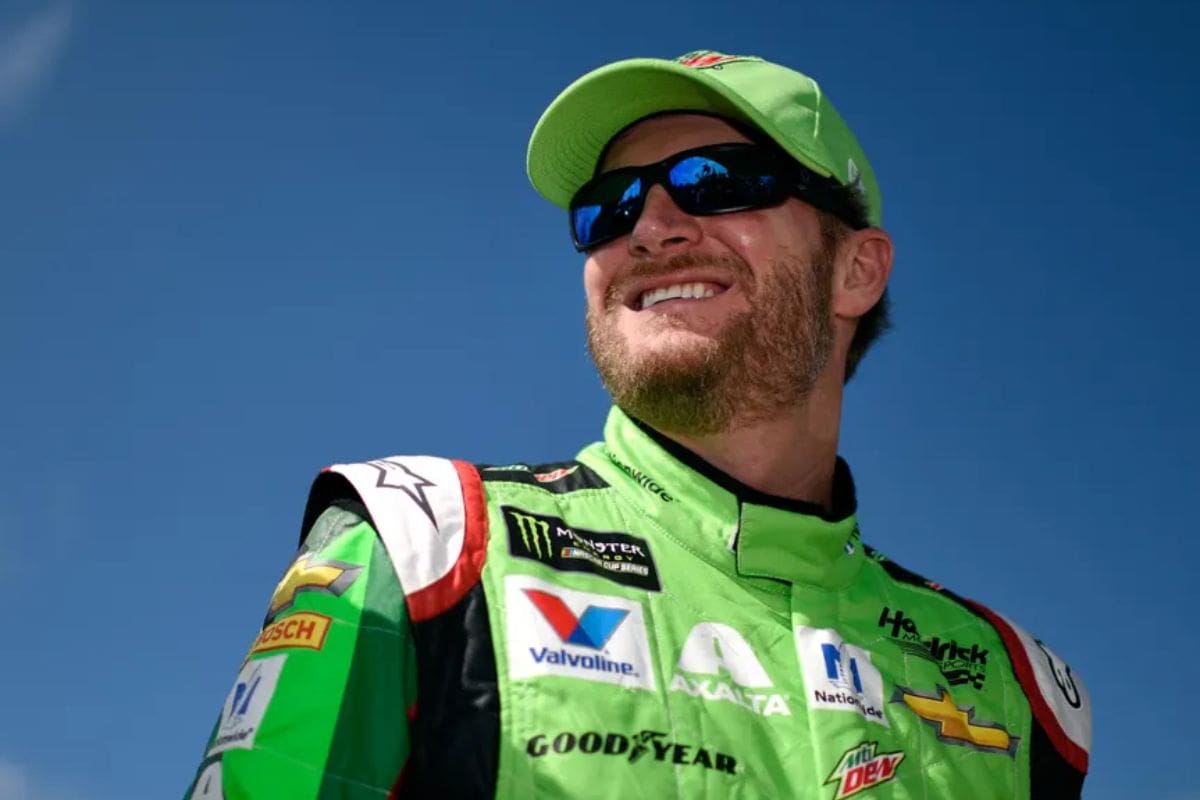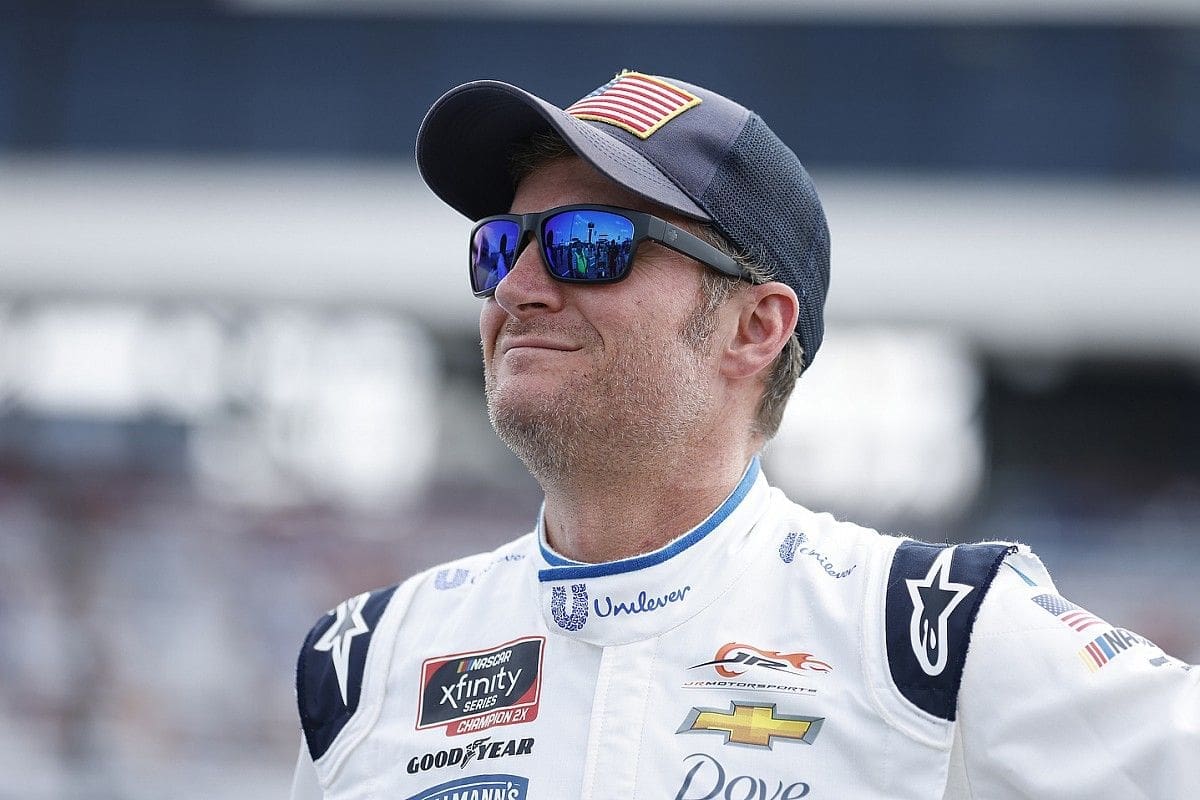Dale Jr. Defends NASCAR: In the wake of the heated debate surrounding the wet weather tire performance at New Hampshire Motor Speedway, Dale Earnhardt Jr. has come forth as a defender of NASCAR’s intentions and strategic decisions. Highlighting NASCAR’s progressive approach to safety and race continuity, Earnhardt Jr. calls for a balanced perspective on the challenges of integrating new technologies into the sport. While acknowledging the discontent among fans and stakeholders, he stresses the importance of patience and realistic expectations.
Key Highlights
- Dale Earnhardt Jr. praised NASCAR’s proactive steps with wet weather tires to ensure race continuity and safety.
- Emphasized the importance of clear communication from NASCAR to manage fan expectations about wet weather tires.
- Acknowledged the benefits of technological advancements for driver safety and fan experience during adverse conditions.
- Highlighted the need for aligning fan expectations with the realities of using wet weather tires in competitive racing.
- Supported NASCAR’s methodical implementation and safety measures, reinforcing their commitment to innovation and race integrity.
Introduction to NASCAR’s Wet Weather Tire Debate
The introduction of wet weather tires in NASCAR has sparked a rigorous debate among fans and experts, showing the challenges and opportunities associated with racing under variable weather conditions. This controversial issue gained momentum following the recent Cup Series race at New Hampshire Motor Speedway, where the use of wet weather tires was put to the test under less-than-ideal conditions.
Historically, NASCAR has mainly been a fair-weather sport, with races typically postponed or delayed when rain threatened track safety. The decision to introduce wet weather tires marks a significant departure from tradition, aiming to reduce delays and maintain the competitive edge of the sport despite adverse weather. Supporters argue that this move could improve the viewing experience by ensuring races proceed as scheduled, thus preserving the sport’s momentum and fan engagement.
However, critics highlight several concerns. The primary apprehension revolves around safety; racing at high speeds on a wet track, even with specially designed tires, introduces new risks. Critics argue that wet conditions can compromise visibility and traction, potentially leading to more frequent accidents. Moreover, the performance variability among drivers and teams under wet conditions could skew competition, favoring those more adept at handling the unpredictability of a slick track.
From an engineering perspective, the development and deployment of wet weather tires present a technological challenge. These tires must balance grip, durability, and performance under changing conditions, making their design and testing a high-stakes endeavor.
Dale Earnhardt Jr.’s Perspective on Wet Weather Tires
Expressing both praise and apprehension, Dale Earnhardt Jr. looked into the intricacies of NASCAR’s wet weather tire implementation during a recent episode of his podcast, ‘Dale Jr. Download.’ Earnhardt Jr., a seasoned veteran and influential voice within the sport, offered a detailed analysis that resonated with optimism and caution regarding this inventive approach.
Firstly, he commended NASCAR for their proactive steps in using wet weather tires at New Hampshire Motor Speedway. The primary benefits he highlighted include:
- Race Continuity: The ability to maintain race momentum despite adverse weather conditions.
- Fan Experience: Reduced delays, ensuring that spectators get a complete and engaging event.
- Driver Safety: Improved grip on wet surfaces, potentially minimizing accident risks.
- Technological Advancement: Pushing the envelope in tire technology, fostering an environment of continuous improvement.
However, Earnhardt Jr. also articulated several concerns that warrant attention. He showed the apparent disconnect between NASCAR’s technical understanding of the tires’ capabilities and the fans’ expectations. This gap, he suggested, could lead to misunderstandings and dissatisfaction among the sport’s dedicated followers.
“The Cup race this weekend, the whole conversation is going to be about the tires—the rain tires, wet weather tires. There’s a bit of a disconnect between what NASCAR knows about the tire and its capabilities, and what the fan at home knows. NASCAR needs to make clear why the tire is there, what it will be used for, and what it won’t be used for.” – (dale jr.)
NASCAR’s Strategic Use and Clarification of Wet Weather Tires
NASCAR’s VP of Competition, Elton Sawyer, has provided critical insights into the strategic deployment and intended use of wet weather tires, emphasizing that these tires are designed to improve safety during damp, rather than heavily rain-soaked, track conditions. This clarification comes amidst ongoing scrutiny regarding NASCAR’s handling of wet weather scenarios, particularly during the NHMS race.
“I think the way we started this whole wet-weather-tire-process was basically we wanted to get our races started on time. And it really played into our hand yesterday to get the Xfinity race started on time and to get our races back to green as quick as possible if we’ve had a delay, which we had today, so you know, kudos to Goodyear.” – (Sawyer)
Sawyer showed that the primary motivation behind the deployment of wet weather tires is to increase safety, allowing for controlled racing in less than ideal conditions. This strategy was evident during the NHMS race, where non-competitive pit stops were mandated to guarantee that track conditions were adequately safe for continued racing.
“We just want to do this in the safest way possible.” – (Sawyer)
“If you look at the reason we came up with this and started working with teams and the folks at the R&D center, it was to do exactly what we did yesterday with the Xfinity race and what we did today with the Cup race. So yes, very successful.” – (Sawyer)
Contrary to initial skepticism, many industry veterans, including Adam Stevens, have praised NASCAR’s thorough and methodical approach in both the implementation and validation of these tires.
“I thought they were crazy. They proved me wrong. They did a really good job of coming up with a plan methodically. They figured out that once you got the water off the race track, you could run in it. That was probably the best way to dry the track, too. The racing community has a lot to take away from these words of wisdom.” – (Stevens)
| Aspect | Details | Implications |
|---|---|---|
| Intended Use | Damp track conditions | Facilitates safer racing without major delays |
| Safety Measures | Non-competitive pit stops during adverse conditions | Ensures driver safety and track integrity |
| Feedback | Positive response from veterans like Adam Stevens | Increased confidence in NASCAR’s strategic decisions |
| Implementation | Methodical and evidence-based | Supports gradual adoption and trust among stakeholders |
| Effectiveness | Proven during NHMS race | Demonstrates practical benefits in real-world scenarios |
Community Response and Debate Over Wet Weather Tires
Amidst the introduction of wet weather tires at NHMS, contrasting opinions emerged within the NASCAR community, reflecting a broader debate over their practicality and efficacy under varying track conditions. This comparison of viewpoints shows the complexities and divergent expectations surrounding NASCAR’s adaptation to weather-related challenges.
- Support for Innovation: Proponents argue that wet weather tires represent a progressive step towards minimizing weather disruptions. Enthusiasts and some drivers believe these tires improve safety and maintain the continuity of races, echoing sentiments that NASCAR is evolving with technological advancements to meet contemporary demands.
- Skepticism on Performance: Critics highlight the tires’ performance limitations, particularly under extreme conditions. They argue that while the idea is sound, the practical application falls short when tracks are excessively wet, potentially compromising driver safety and race integrity.
- Fan Experience: The debate extends to the fan experience, with some fans appreciating the reduced likelihood of race cancellations, while others worry that suboptimal tire performance could detract from the overall excitement and unpredictability that dry racing conditions typically offer.
- Stakeholder Expectations: Team owners and sponsors have varied expectations regarding the utility of wet weather tires. Some appreciate the potential for uninterrupted race schedules, while others express concerns about the financial and logistical implications of implementing these tires under uncertain weather conditions.
Conclusion and Future Implications for NASCAR
As NASCAR continues to navigate the complexities of weather-related challenges, the ongoing evaluation and refinement of wet weather tires will be crucial in shaping the sport’s future dynamics and safety protocols. The recent experience at New Hampshire Motor Speedway demonstrates NASCAR’s commitment to integrating creative solutions to mitigate weather disruptions, while maintaining the integrity and safety of racing events. This strategic approach shows the delicate balance between meeting fan expectations and prioritizing driver safety.
“NASCAR doesn’t want to be in a position of controlling the race so tightly. They want to turn it over to the teams, but they can’t risk a disaster. If they turn it over and things go wrong, everyone will blame NASCAR, not the teams.” – (dale jr.)
The successful deployment of wet weather tires at NHMS signals a significant step forward. However, it also opens up a broader conversation about the role of technology in motorsports. For NASCAR, the future depends on continued dialogue and education regarding the capabilities and limitations of these tires. Fans, drivers, and stakeholders need to understand that while wet weather tires allow for greater flexibility in adverse conditions, they are not a solution for all weather-related issues.
“Rain tires are tricky. When you hear rain tires, you think, ‘Oh, they can race in the rain. No problem.’ But it’s not that simple.” – (Dalton)
“Wet weather tires make more sense. The name itself sets better expectations.” – (dale jr.)
Moreover, NASCAR’s adaptability will be vital in maintaining its competitive edge as it confronts evolving climatic patterns. By investing in research and development, NASCAR can refine tire performance and expand their usability across different tracks and weather scenarios. This proactive stance will not only improve safety protocols but also align with the sport’s strategic goals of preserving race integrity and fan engagement.
News in Brief: Dale Jr. Defends NASCAR
The controversy surrounding wet weather tires at NHMS shows the complexities of integrating new technologies into NASCAR. Dale Jr.’s defense of the organization highlights a critical understanding of the balance required between innovation, safety, and tradition.
While community response remains polarized, the proactive measures taken by NASCAR reflect a commitment to improving race conditions and safety standards.
Future developments will likely depend on continuous evaluation and adaptation to address the technological limitations and stakeholder expectations.
ALSO READ: Dale Earnhardt Jr Holds on to Cup Dream Despite Setbacks



